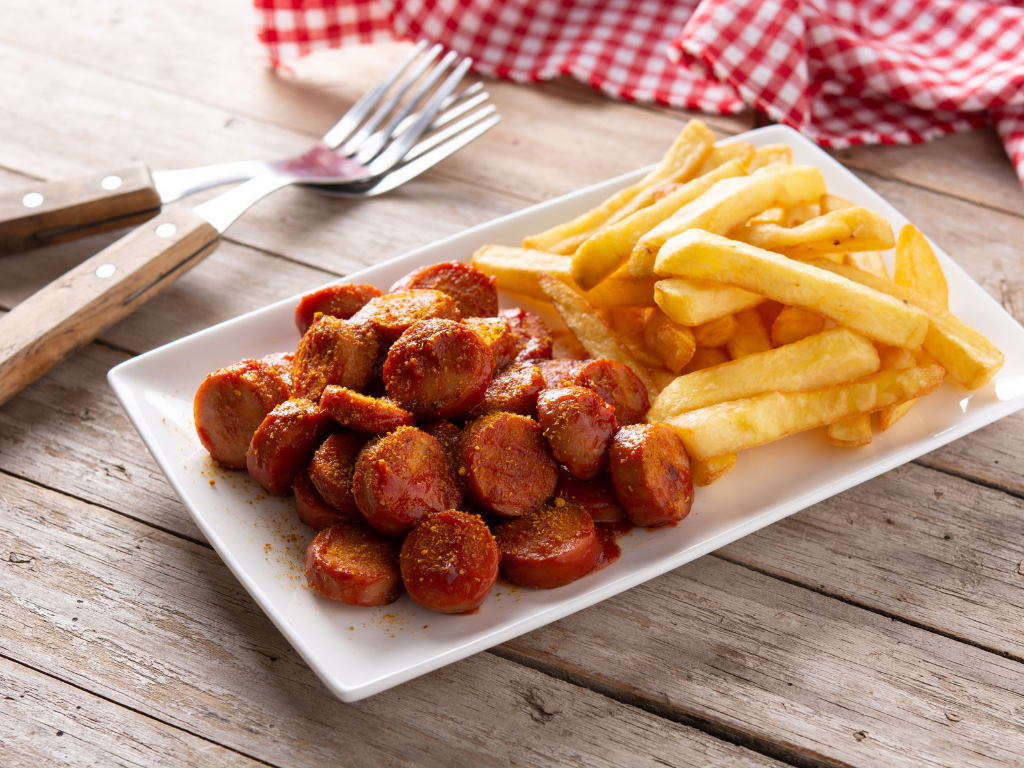When you think of the best food in Germany, what comes to mind? Sausages sizzling at a Christmas market, golden schnitzels on a cosy plate, or perhaps the sweetness of a perfect apple strudel?. Trips to Germany promise a food culture that is hearty, diverse, and a blend of time-honoured traditions and modern twists, reflecting the country’s regional diversity and history. From Sauerbraten, considered the national dish of Germany, to the bold spices of Currywurst, the variety is as rich as the flavors themselves. So get ready to discover new flavors and get a taste of what’s waiting with this guide to the best food in Germany.
1. Schnitzel
A golden, crispy schnitzel is a must-try in Germany. While it originated in Austria, the German version—typically made with pork or veal—is beloved across the country and a staple in beer gardens and restaurants alike. The simplicity of schnitzel is part of its charm: a satisfying crunch, a burst of citrus from the lemon, and a plate that feels both indulgent and accessible. For travelers, it’s a comforting entry point into German cuisine—familiar yet distinctly local. You’ll find regional variations, too: in Bavaria, you might enjoy it alongside Bratkartoffeln (German fries), while in northern Germany, it could arrive with herring or mustard sauce.
2. Kartoffelsalat
Schnitzel is classically served with a lemon wedge and kartoffelsalat. At first glance, this potato salad might seem like a simple side—but in Germany, it’s a dish that inspires fierce regional pride and endless debate. Some recipes are creamy with mayonnaise, while others lean sharp with vinegar and mustard. In the south, kartoffelsalat often has a warm, vinegary tang, while in the north, it tends to be creamy and rich. However you make it, one thing’s for sure: no barbecue, picnic, or family dinner is complete without it.
Kartoffelsalat is the ultimate sidekick for many of the best food in Germany—from bratwurst to schnitzel. It’s a dish that feels familiar yet surprising, with each version telling a different regional story. Try it at a market stall with a sausage in hand, or alongside roast meats at a cosy restaurant—it’s a taste of Germany’s culinary heritage in every bite.
3. Bratwurst and Currywurst
Germany’s love affair with sausages is legendary, and bratwurst is at the heart of it all. Whether grilled over charcoal or simmered in beer, it’s a simple pleasure best enjoyed outdoors with a dollop of mustard. In Berlin, you’ll find currywurst—a post-war invention of sausage smothered in tangy curry ketchup. It’s messy, spicy, and utterly delicious.
Beyond the classic versions, sausage culture in Germany is remarkably regional. In Thuringia, you’ll find bratwurst with a finer grind, while in Franconia, it’s all about pork and marjoram. Exploring these variations is like a culinary road trip through Germany’s heartland.
4. Sauerbraten
When it comes to the national dish of Germany, sauerbraten often tops the list. This slow-cooked pot roast is marinated for days in vinegar, wine, and spices, then braised to melt-in-your-mouth perfection. It’s a dish that tells a story of patience and craftsmanship, served with red cabbage and kartoffelklöße (potato dumplings) for a truly comforting meal. Sauerbraten isn’t just a meal—it’s a tradition. Families pass down marinade recipes, and debates rage over the perfect side dish to go with it. You’ll find it both in a rustic tavern or a fine-dining restaurant.
5. Kartoffelklöße
Kartoffelklöße—also known as potato dumplings—are a beloved side dish that appears on plates across Germany, especially in the south. Made from starchy potatoes, eggs, and sometimes a touch of flour, these dumplings are soft, fluffy, and the perfect partner for rich, saucy mains like sauerbraten or rouladen. Their delicate texture soaks up gravies beautifully, turning every bite into a satisfying, comforting mouthful. Like much of German cuisine, kartoffelklöße vary by region. In Thuringia, for example, the dumplings are often a 50-50 mix of raw and cooked potatoes, giving them a firmer texture. In Bavaria, they tend to be softer and creamier.


Leave a Reply